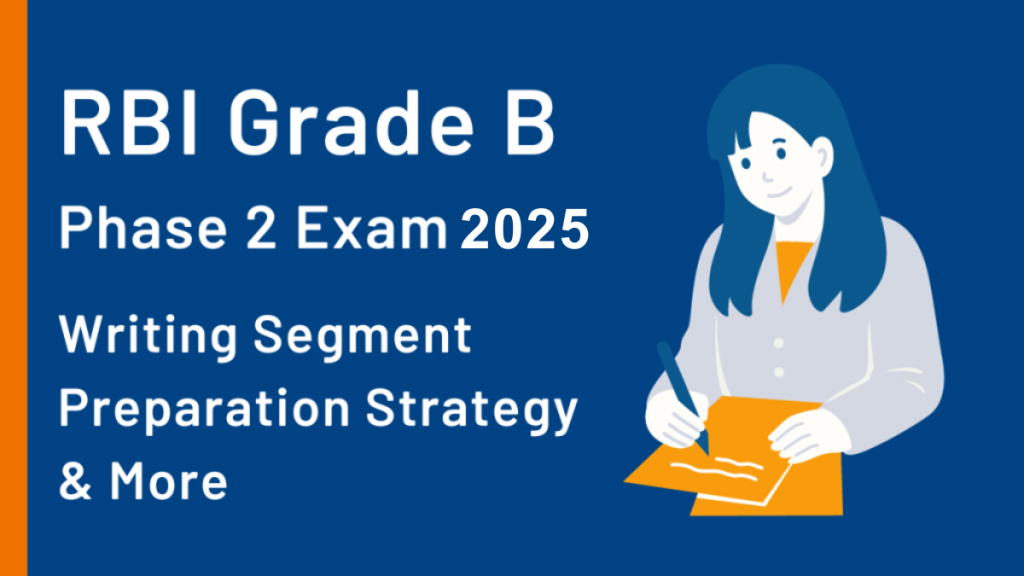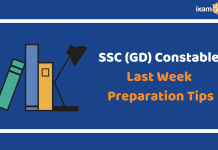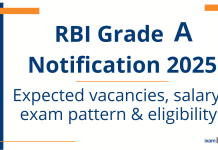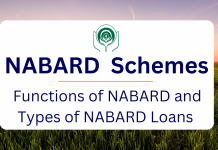The Reserve Bank of India’s Grade B notification about the changes in the exam pattern for the descriptive segment in Phase 2 was first introduced in 2021. It has naturally left students who sit the exam every year apprehensive. For the unversed, the candidates sitting the exams are expected to compose 2000 words for the ESI (Economic and Social Issues) and FM (Finance and Management) papers, all within the demanding time frame of 90 minutes. This has created heightened anxiety and uncertainty among aspiring candidates as they grapple with questions like how to approach this task, what strategies to employ, whether they need to be proficient typists, or if the RBI evaluates their typing speed rather than their subject knowledge.
As the RBI Grade B Phase 2 exam approaches, releasing the RBI handout for the descriptive papers has caused confusion and anxiety among students. In this article, we endeavor to provide valuable insights into crafting a last-minute strategy for tackling the descriptive ESI and FM papers and offer guidance on navigating this challenging phase of the RBI examination. The exam, expected to take place in mid-2025, leaves little time for additional preparation. Therefore, it is crucial to channel your efforts toward harnessing the knowledge and strategies you have acquired throughout your months of preparation.
Now, let’s explore how the ixamBee’s RBI Grade B Phase 2 course can be a vital resource in enhancing your exam preparedness. The course equips you with the necessary tools and expertise to tackle descriptive papers effectively, ensuring you are well-prepared to face the revised exam pattern.

RBI Grade B Phase 2 Exam Pattern
Now that the RBI Grade B 2024 recruitment is behind us, it’s time to gear up for the upcoming RBI Grade B 2025 exam. Although the RBI Grade B 2025 notification is yet to be released, you can refer to the previous notification to get insights into the exam pattern and syllabus. The last notification before the current one had introduced some changes to the RBI Grade B Phase 2 syllabus. Therefore, it’s necessary for you to familiarize yourself with the expected syllabus and exam pattern for RBI Grade B Phase 2 2025. This knowledge will streamline your preparation and keep you informed about any potential updates. We aim to comprehensively understand the examination, empowering you to prepare with a well-planned strategy. We’ll delve into the details of the RBI Grade B exam pattern, including the allotted time, question distribution, subject assessment, and more. This foundational knowledge will be your key to success in your RBI Grade B exam preparation journey. The RBI Grade B exam selection process comprises three phases, which we’ll discuss in detail below. This comprehensive awareness will set you on the right path for your RBI Grade B exam preparation.
| Phases | Exam Type | Marks | Duration | Exam Language |
| Phase 1 (Prelims) | Objective | 200 marks | 2 hours | Bilingual (Except the test for English language.) |
| Phase 2 (Mains) | Paper 1 (Objective & Descriptive)- | 100 marks | 30 minutes (Objective) & 1 hour 30 minutes (Descriptive) | |
| Paper 2 (Writing Skills)- | 100 marks | 1 hour 30 minutes | ||
| Paper 3 (Objective & Descriptive)- | 100 marks | Composite time of 2 hours | ||
| Phase 3 (Interview) | Interview | 75 marks | ||
RBI Grade B Phase 2 Syllabus
Candidates might be curious about the RBI Grade B Syllabus. The Phase 2 writing segments in Economic and Social Issues (ESI) and Finance and Management have been a source of concern and anxiety for many candidates, even though they come after clearing Phase 1. This blog addresses these apprehensions, recognizing the important role these segments play in the RBI Grade B Exam. In RBI Grade B Mains Paper 3, Finance and Management feature prominently, with the addition of new topics like NaBFID, Recent Developments in the Global Financial System’s impact on the Indian Financial System, and the Role of IT in Banking and Finance. Furthermore, General Topics also includes a section on the Basics of Accounting and Financial Statements. This comprehensive RBI Grade B Phase 2 Syllabus demands candidates to write 2000 words in 90 minutes for all three papers: Economic and Social Issues, Descriptive Writing in English, and Finance and Management. Navigating this challenge is made easier with the help of ixamBee’s online courses, designed to provide invaluable guidance for success in these segments.
| Subject | Syllabus and Topics to Study |
| Economic and Social Issues | Growth and Development: National Income, Poverty Alleviation, Employment Generation, Sustainable Development, Environmental IssuesIndian Economy: Economic History, Industrial and Labor Policy Changes, Monetary and Fiscal Policy since Reforms (1991), Economic Survey, Union Budget, Money and Financial Markets, Role of Banks, Reserve Bank, Public Finance, Political Economy, Industrial Developments, Agriculture, Services SectorGlobalization: Opening up of the Indian Economy, Balance of Payments, Export-Import Policy, International Economic Institutions (IMF, World Bank, WTO), Regional Economic CooperationSocial Structure in India: Multiculturalism, Demographic Trends, Urbanization, Migration, Gender Issues, Social Justice |
| Finance and Management | Financial System Financial Institutions and RBI Functions, Indian Banking System and Recent Global Developments, IT in Banking and Non-Banking Systems, Digital Payments, Financial Markets: Types and Functions General Topics Risk Management and Derivatives, Global Financial Markets and International Banking, Financial Inclusion and Alternate Finance, Corporate Governance, Union Budget and Financial Statements, Inflation Control Management & Organizational Behaviour Management Concepts and Roles, Organizational Behavior: Personality, Perception, Motivation, Leadership, Emotional Intelligence, Conflict, Change Management, Ethics & Corporate Governance – Ethics in Business: Theories and Practical Applications, Corporate Governance Factors and Mechanisms, Communication and Role of IT |
RBI Grade B Phase 2 Descriptive Segment Pattern
While we have already spoken about the exam pattern for the RBI Grade B Phase 2 exams, Let’s take a closer look at the pattern for the descriptive segment. This analysis will help students prepare for the exam a little more systematically. In the RBI Grade B Phase 2 examination, both the Economic and Social Issues (ESI) and Financial Management (FM) papers now include 50% of descriptive questions that require candidates to provide their answers within a specified word limit and time duration. The question distribution for the Phase 2 exam, as outlined by RBI, consists of 30 objective questions in ESI and FM, accounting for 50 marks. Candidates are allotted 30 minutes to complete these objective questions, marking a crucial segment of the examination process.
There is ample time for you to attempt the objective questions for ESI and FM in 30 minutes, and it is achievable if you have been practicing and giving mocks. As soon as the objective section is finished and your allotted time of 30 minutes has passed, your second paper of descriptive ESI and FM will start. There is no break between these two papers. Your 90 minutes will start immediately after you finish the objective paper.
Descriptive Section Marking Scheme Breakdown
In the Descriptive section of the RBI Grade B Phase 2 exam, both Economic and Social Issues (ESI) and Financial Management (FM) papers present candidates with four questions. These questions hold a total weightage of 50 marks and require candidates to answer them within a time limit of 90 minutes. This segment assesses candidates’ comprehensive knowledge and analytical skills in ESI and FM, ensuring a rigorous proficiency evaluation. Successful performance in these descriptive questions is pivotal for achieving a solid score in the examination.
Whether the allotted time of 90 minutes is sufficient for completing the four descriptive questions has been a lingering concern for every RBI Grade B aspirant, leading to considerable confusion. However, the RBI’s Phase 2 handout provides clarity, stating that candidates will face a total of six descriptive questions, out of which they must attempt four. These questions are divided into two categories: two worth 15 marks each and two worth 10 marks each.
The word limit for the 15-mark questions is 600 words, while the 10-mark questions have a word limit of 400 words. To meet the 2000-word requirement, candidates should aim to write 600 words for the first two questions and 400 words for the remaining two. This equates to writing approximately 22-23 words per minute, helping candidates manage their time effectively and excel in this challenging segment. Candidates should also remember that ten minutes of the total time allotted will be taken for reading the question paper.
Strategy to write 2000 words in 80 minutes
Self-Preparation Assessment:
Before delving into exam strategy, it’s highly important for you to ask yourself a few fundamental questions to ease your stress and anxiety. These introspective inquiries can be pivotal in your exam preparation:
- Content and Knowledge Check: Are you well-versed in the exam content, and do you possess a comprehensive understanding of the subject matter? A strong foundation in the content is essential for crafting meaningful responses.
- Confidence Evaluation: Do you have the confidence that stems from your thorough preparation and practice for the exam? Confidence can boost your performance, making it crucial to build and reinforce.
- Typing Proficiency: Have you dedicated time to practice typing your descriptive answers, ensuring you are comfortable with the keyboard and can maintain a good typing speed? Typing proficiency can significantly impact your ability to complete answers within the allocated time.
Strategizing Your Descriptive Answers:
With these self-assessments in mind, it’s time to formulate a strategic approach to your descriptive answers.
- Content Prioritization: Begin by prioritizing essential key points in your mind before you commence writing. This will provide a clear structure to your answer and ensure you don’t miss critical elements.
- Answer Structuring: Embrace a structured approach for your answers, including an Introduction, a well-structured Body, and a Conclusion. Avoid unnecessary elaboration, focusing on covering key points effectively. This structure enhances the readability and coherence of your responses.
- Answer Length: Aim for concise yet comprehensive answers, typically spanning 2 to 3 paragraphs of 150-200 words each. This balance will help ensure you meet the prescribed word limit while maintaining the quality of your responses.
- Time Allocation: Allocate your time wisely, spending 20-25 minutes on each of the 15-mark questions and 15 minutes on each of the 10-mark questions. Concentrate on attempting the full paper, and do not pad your answers with superfluous information to meet word limits. Be prepared for potential technical issues during the actual exam, and have a clear time management strategy in place.
- Practice Previous Papers: To sharpen your skills and get a feel for the actual exam, it’s highly advisable to practice with RBI Grade B Phase 2 previous year question papers. This will acquaint you with the question patterns, exam format, and the level of complexity you can expect. Regularly attempting past papers will enhance your problem-solving and time-management skills, ensuring you’re well-prepared on exam day.
- Opt for Online Courses: Enrolling in online study materials dedicated to the exam, like the RBI Grade B Phase 2 online course, can be a game-changer in your preparation journey. Online courses offer comprehensive study material, expert guidance, and mock tests that mirror exam conditions. ixamBee, for example, provides online courses specifically designed for RBI Grade B Phase 2, ensuring you receive structured guidance and ample practice opportunities.
- Leverage Mock Tests: Mock tests are an invaluable resource for fine-tuning your exam strategy. Regularly taking RBI Grade B Phase 2 Mock Tests offered by ixambee can be helpful for candidates. Mock tests not only help you gauge your progress but also familiarize you with the natural exam environment. They are a vital part of your preparation, allowing you to identify strengths and weaknesses and make necessary adjustments to your approach.
Summing Up
In conclusion, thorough preparation, self-assessment, and a structured approach are vital for success in the RBI Grade B Phase 2 exam. Candidates should evaluate their knowledge, typing skills, and confidence levels before the test. Effective time management, content prioritization, and adherence to word limits are key in crafting answers. These efforts will significantly enhance performance in the challenging Phase 2 examination.
Prepare with ixamBee
Embarking on the journey to become an RBI Grade B Officer commences with thorough preparation for the upcoming RBI Grade B exam. ixamBee provides various resources for the RBI Grade B exam preparation, like the RBI Grade B Exclusive Online Course, RBI Grade B free mock tests, and RBI Grade B previous year question papers.
ixamBee specializes in providing expert guidance and resources for banking exams 2024, ensuring that you are well-prepared for the Upcoming Bank Exams like RBI Grade B, NABARD Grade B, IBPS SO, and more. Our courses align with the bank exam calendar 2024, covering all the essential topics. With a focus on the upcoming bank jobs, our Previous Year Papers, BeePedia, SSC CGL, SSC CHSL, SSC MTS and other Mock Tests are designed to help you excel in upcoming banking exams.
ALSO READ:
RBI Assistant Salary: Pay scale & More
Ace RBI Grade B Interview with Prachi Agarwal – Part 1
RBI: Full Form and Other Information















